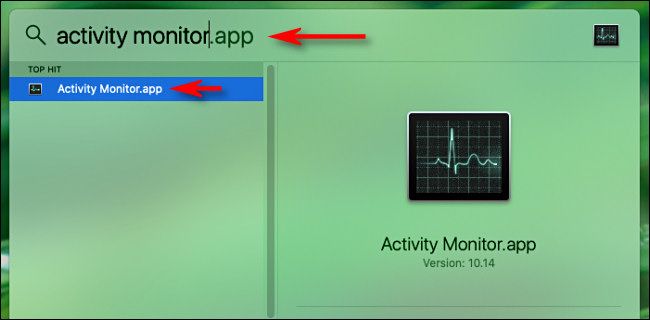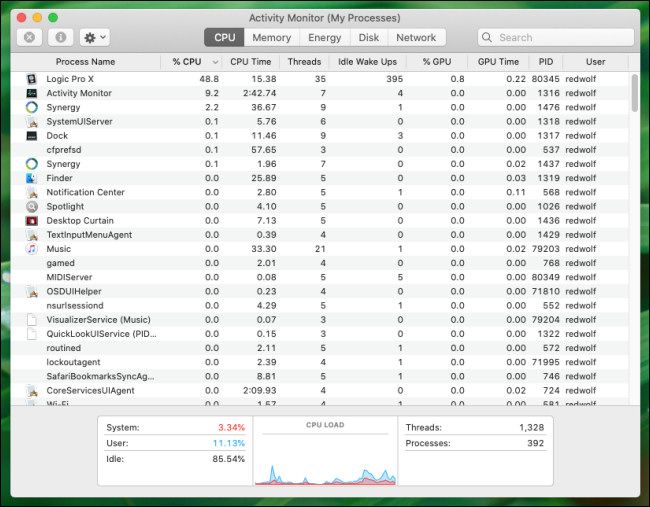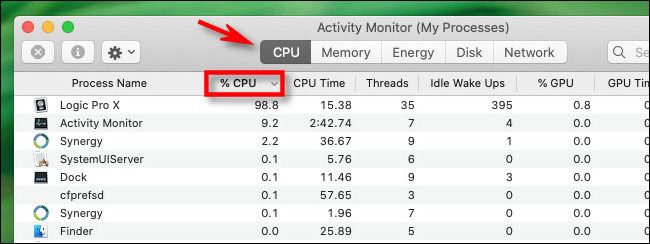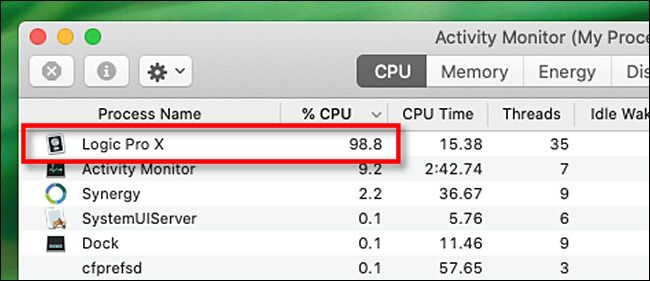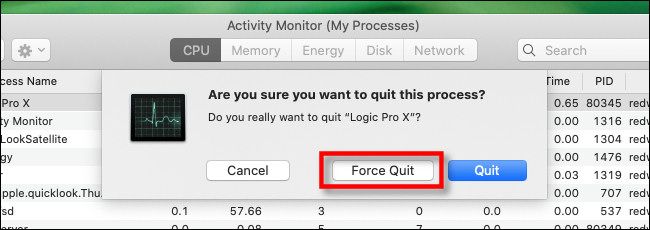If your Mac is suddenly feeling very sluggish and unresponsive, it's possible that a runaway application is consuming a large percentage of your CPU's processing power. To find out, we'll use a built-in macOS utility called Activity Monitor. Here's how.
First, open "Spotlight" by pressing Command+Space or by clicking the "small magnifying glass" icon in your menu bar.
When the "Spotlight Search" bar pops up on your screen, type "activity monitor" and hit "Return." Or you can click the "Activity Monitor.app" icon that appears.
In "Activity Monitor," you will see a list of all the processes running on your computer. The term "process" is a generic term for any program running on your Mac. This includes both applications you run and silent programs operating in the background that make your computer work properly.
To see which process is using the most CPU, click the "CPU" tab. Then click the "% CPU" column header until the carat beside it is facing downward. This will rank the processes, from greatest to least, by what percentage of the total CPU processing capacity they are using.
Look for suspiciously high numbers in the "% CPU" column beside one of the entries in the list. Most applications rarely use over 50% CPU unless they are doing something very processor intensive, such as playing a complex game or rendering a video, and you will usually understand why. In that case, it's best to just wait until the task completes.
But if a runaway process is your issue---a program that gets stuck in an unwanted CPU-intensive loop---it should be obvious by looking at the high CPU % listed in Activity Monitor. When you get into the 90% range or above, the odds are high that that process will dramatically slow down your machine.
At this point, if the process using a large percentage of the CPU is an app, you can try to quit it using the usual methods, such as selecting "Quit" in the File menu or right-clicking its icon in the Dock and selecting "Quit."
But if the process or app is unresponsive and you would like to force it to close, click the process in the list to select it, then press the "Stop" button, which looks like an octagon with an "X" inside.
Upon pushing the "Stop" button, a small menu will pop up asking for confirmation. Click "Force Quit."
After that, the problematic app or process will close. If your computer becomes responsive again, then you know that an unresponsive runaway process was the issue.
If you keep having repeated CPU issues with the same app, it's best to try to update the app, which may fix a bug that is causing the problem. You could also try updating macOS, which may fix a bug with a background process or a bug that is affecting how an app runs. It also never hurts to restart your Mac, which can solve a variety of problems. Good luck!



